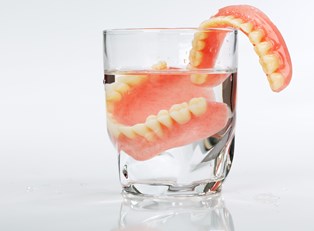Gingivitis is the first stage of periodontal disease, which is characterized by inflammation of the gums. Careful oral hygiene can usually stave off extreme symptoms, but some people are simply more susceptible to developing periodontal disease than others. Furthermore, once gingivitis becomes evident, the gums and teeth can deteriorate very quickly. Recognizing the symptoms as early as possible allows you to take precautionary measures before complications ensue.
Development of Gingivitis Symptoms
Gingivitis is often mild enough that it can take some time to realize you have it. There are a plethora of bacteria inhabiting your mouth; when they meet up with certain food particles, plaque forms on the teeth. Plaque is a sticky film that grows not only on the outside of the teeth, but may sneak up under the edges of the gums as well. After only a few days, the plaque can turn into tartar, or calculus, that becomes harder and more difficult to get rid of. The calculus is not only extremely difficult to get rid of, but it also serves as a protective barrier for the bacteria in your mouth. So not only do you have the layer of tartar you can’t get rid of, there’s a layer of pathogens under the gums you can’t get rid of either.
Initial Signs of Gingivitis
This mass of tartar and bacteria is what causes gingivitis, and eventually more advanced gum disease and even tooth decay may occur if it isn’t tended to. The gingiva is the part of the gums that come into contact with the teeth. It especially becomes inflamed and irritated by the presence of plaque or tartar.
Initially, gingivitis may only be evident by visible, physical changes -- instead of a pale red, the irritation causes the gums to become darker in color. When you press your finger or tongue to healthy gums, they feel firm. Gums with gingivitis may seem almost puffy to the touch, because of swelling.
Progressive Signs of Gingivitis
Generally, the initial stage of periodontal diseases is not painful (thus, it often goes unnoticed). However, the gums may be a little bit tender. However, bleeding gums are not normal. For example, if you notice blood while brushing or flossing your teeth, you may have gingivitis.
Other signs include a receding of the gums -- the gingiva become higher up on the tooth, making the tooth appear larger. You may also develop halitosis, or bad breath, because of the extra bacteria trapped along the gum line.
Complications of Periodontal Disease
Eventually, if the gums become sufficiently damaged, pockets can begin to form between the teeth, where the gums are pulling away from the teeth. This presents a perfect space for more bacteria to hide, along with food particles. Generally, these pockets don’t begin to appear until periodontal disease has progressed beyond gingivitis. Additionally, the gums will grow increasingly darker and become painful. Ultimately, you may experience tooth loss and even deterioration of the jawbone.
To prevent gingivitis from occurring, experts recommend visiting your dentist for a cleaning at least once a year. Some people are more prone to gingivitis, and may need a thorough teeth cleaning more frequently.




